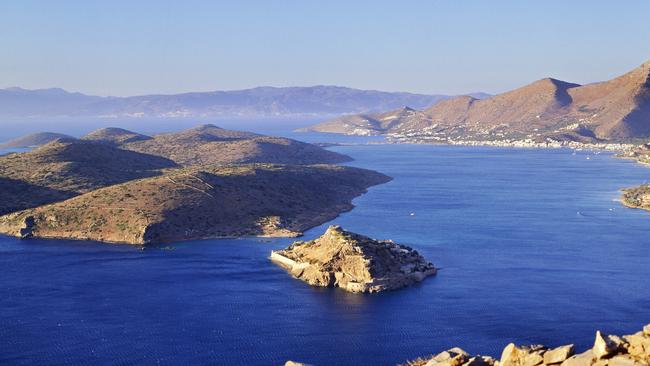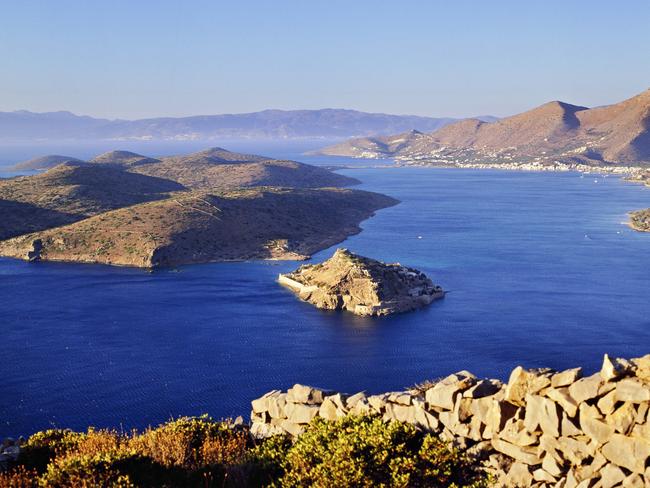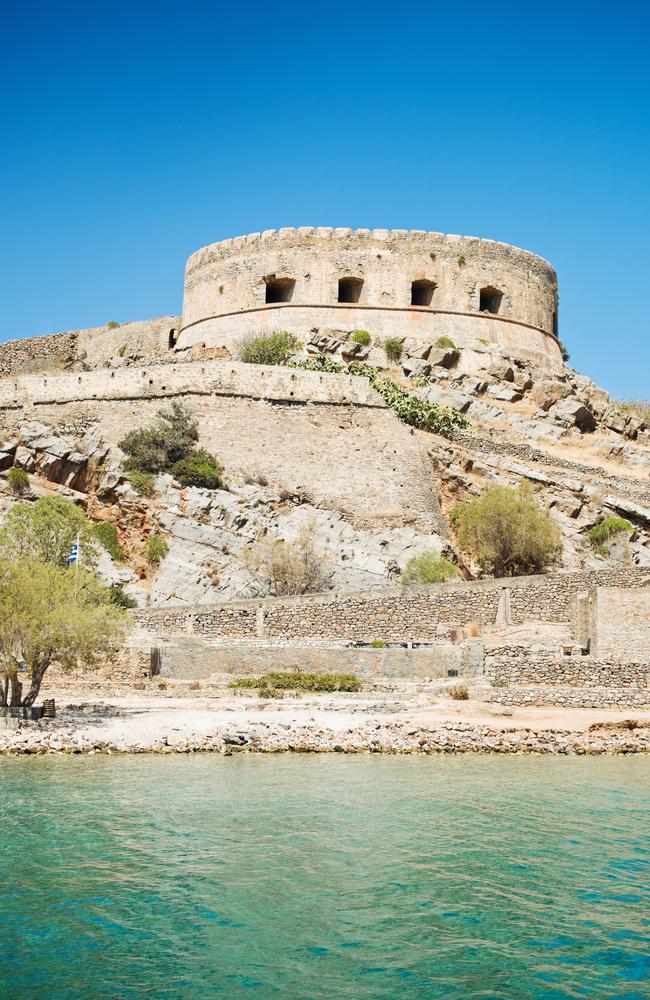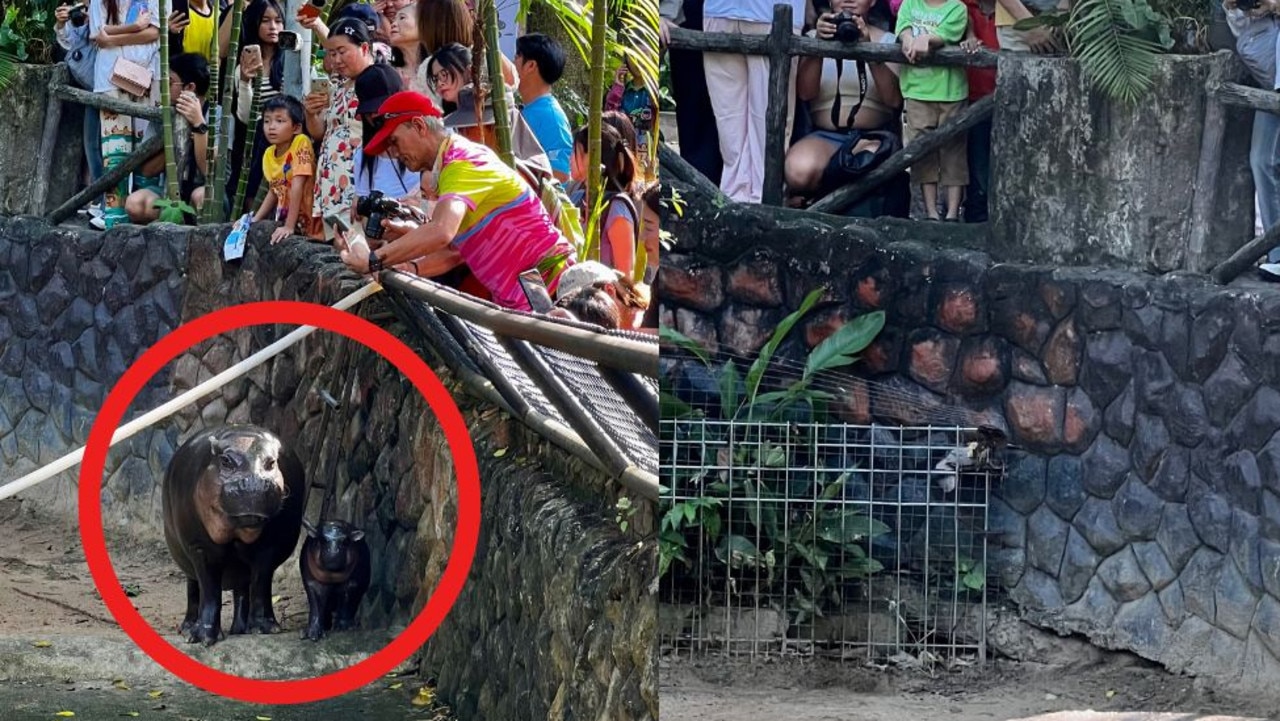The island of Spinalonga wasn’t always bustling with tourists
IT MIGHT be teeming with tourists now, but less than 50 years ago nobody wanted to set foot on this picturesque island.

NO MATTER the year, each and every winter, thousands of Australians escape to the other side of the world to spend the summer in Europe.
And, if their social media didn’t give it away, the vast majority of them descend on Greece’s collection of islands.
Whether they’re lounging on crystal clear beaches in Ios or partying in Mykonos, not a lot of them are spending their time at Spinalonga, a tiny, rocky island off the north coast of Crete.

Despite that, the island is well on its way to becoming a tourist attraction — but visitors aren’t descending on the island because of its pebble beaches and crystal clear water — they’re heading there to investigate the island’s dark history.
Less than 50 years ago, Spinalonga was the place Greece sent people with leprosy to die — one of Europe’s last surviving colonies of its kind.
‘REPULSIVE AND UNCLEAN’
Before antibiotics started to wipe out the threat of leprosy in the 1940s, it was feared the world over. Leprosy, otherwise known as Hansen’s disease, was described in the Bible as “repulsive” and “unclean”. It was stigmatised and led to the establishment of colonies around the world for those suffering.
The disease was long feared to be highly contagious and its symptoms included skin sores and nerve damage. In severe cases, sufferers’ limbs became disfigured and deformed.
To ensure people with Hansen’s disease did not infect the healthy population, they were removed from their homes and sent to colonies for quarantining, far away from their families and friends.
Spinalonga was one of those colonies. Immediately after they were diagnosed with leprosy, the victims of the disease had their property and financial assets seized and had their identity wiped clean.
There was one doctor who lived on the nearby island of Plaka who would make the quick boat ride across if any of the inhabitants were struck down with another disease. He never actually treated them for leprosy.

DANTE’S GATE
Spinalonga was opened as a leper colony in 1903 and was used as a place of exile until 1957. A priest stayed on the island until 1962 to maintain the religious tradition of the Greek Orthodox Church. A notable part of the colony was how people entered. The village had two entrances, one for unaffected people and one for people with leprosy.
The entrance for people with leprosy was nicknamed Dante’s Gate, a reference to Hell, because the victims had no idea what was going to happen to them on the other side.
However, after they made it through the eerie tunnel, the sufferers were given food, water and medical attention. Despite that, standards on the island eventually dropped and it wasn’t until a British expert visited the island that the Greek government officially closed it. The expert compiled a damning report, slamming the island doctor and the government for failing to provide proper medical treatment and housing for the victims.
The Greek government, knowing they’d failed to care for the people properly, burned all of their files from the island. It wasn’t until Epaminondas Remoundakis, a leprosy survivor who lived on Spinalonga, wrote a book that revealed the true, tragic nature of the island.
The book, translated as Lives and deaths of a Cretan leper was co-written by Maurice Born, an ethnologist who spoke about the island to BBC.

“Everyone lived in a frantic state of selfishness, thinking only of survival,” he told the publication.
“No-one looked after one another, the priest had difficulty finding people to help bury the dead.”
Remoundakis managed to form a group called The Brotherhood of the Sick of Spinalonga which pushed the government to allow them to marry and open businesses.
“The Brotherhood worked to establish order and a better quality of life on the island. Sometimes concerts were held by musically-talented residents. Someone donated a record player, which was kept at one of the cafes, and patrons would listen to music,” Born told BBC.
Tourists began descending on the island in the 1980s and Spinalonga’s popularity increased when author Victoria Hislop wrote The Island in 2006. The book romanticised the island’s history and Crete began running boat tours three times a day for anyone wanting to visit the island. Nowadays, boats leave every 30 minutes from the Cretan city of Eloundra and tourists pay eight euros to enter the island.

CLOSER TO HOME
Spinalonga wasn’t the only leper colony of its kind, Australia also had a number of colonies — its most notable being Fantome Island, 65km north east of Townsville. Indigenous Australians were exiled to Fantome Island from 1928 where they were forced to live their entire lives there, far from the prying eyes of a public. Its hospital was closed in 1973 but remnants of the island’s past can be found in graves belonging to adults and children. The island was Queensland’s first offshore facility and at the height of its operation in 1932, 128 men, women and children were sent to the island, a strange mix of tropical paradise and prison.
And despite the island’s dark history, it too has been marked for progress, just like Spinalonga turning into a tourist attraction. A bootcamp for young criminals was the last proposal by Palm Island Mayor Alf Lacey in 2012.




